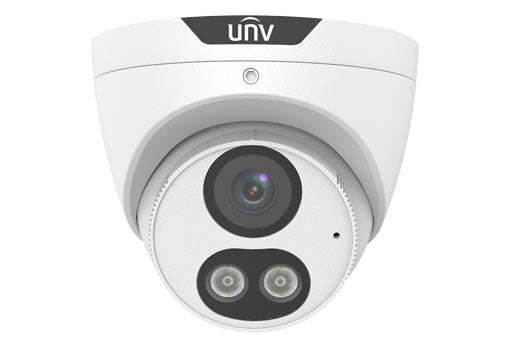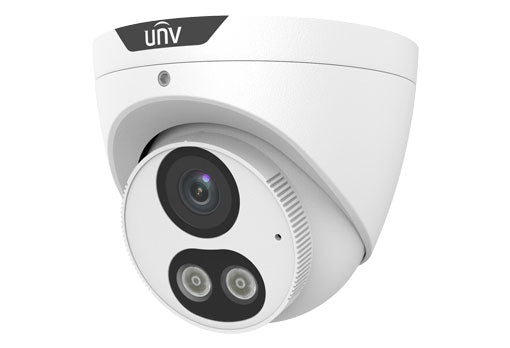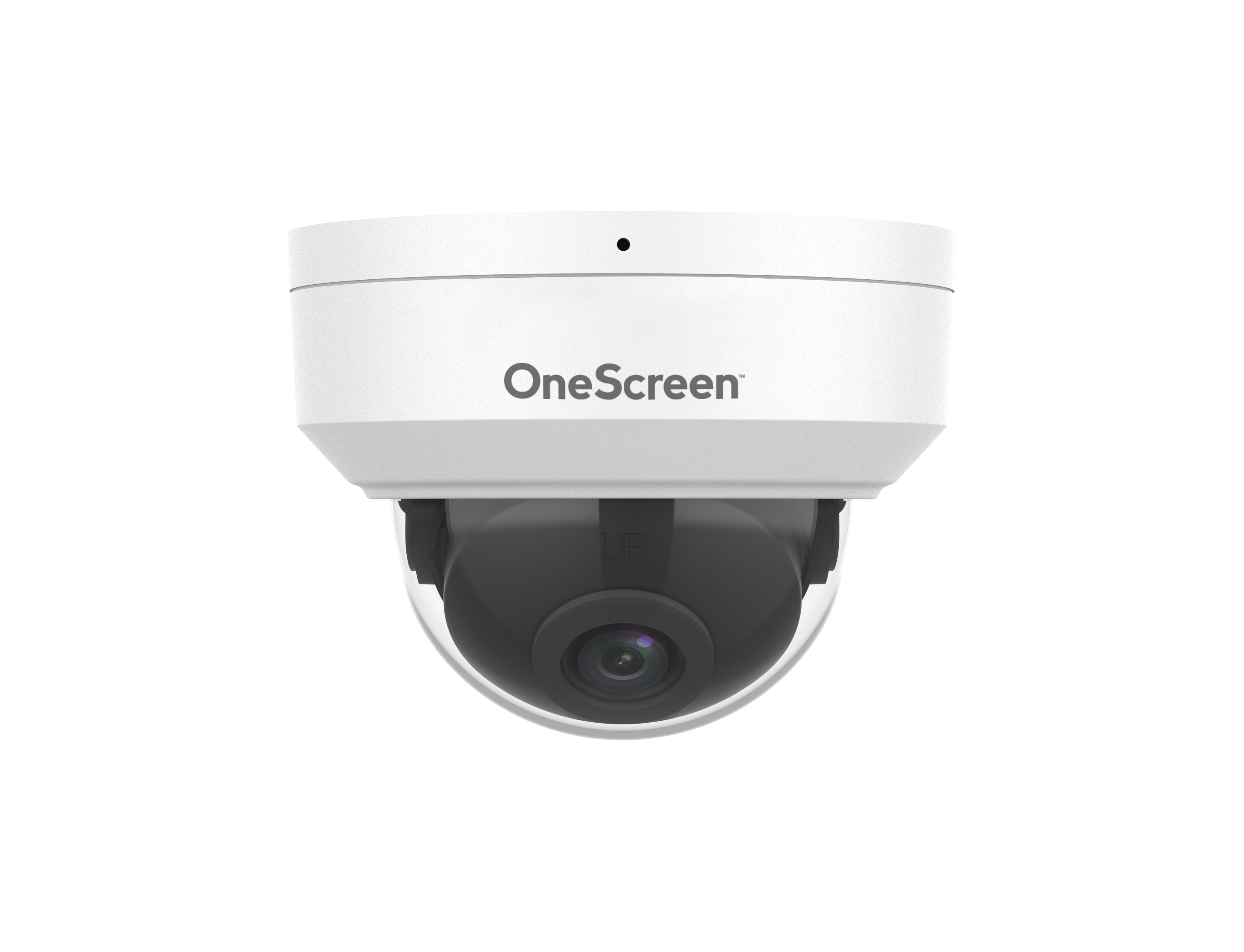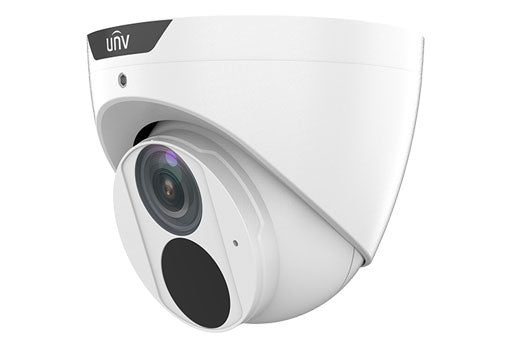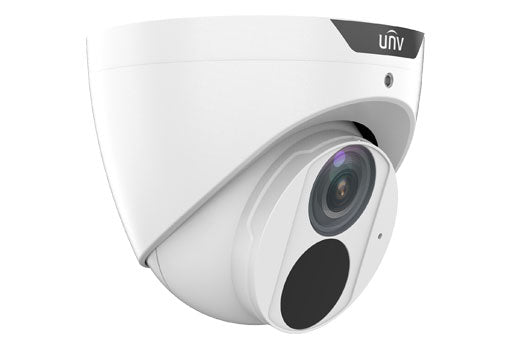All right. So, you're ready to take security seriously?
Really serious.
You want to know what's what in surveillance tech? What actually matters?
Yeah.
You've come to the right place. We're diving deep today into the world of surveillance cameras. Getting into those nitty-gritty features that honestly, they separate a basic system.
Yeah.
From something truly, you know, topnotch.
And I think you're right to be thinking about this. This is—it’s not just about slapping up a camera anymore.
The technology has really changed even in the last couple of years.
It's come a long way. And that's what we're here to break down for you. Yeah.
Give you that knowledge to make a smart choice.
Not just for today, but for the future, right?
Cuz this stuff's evolving all the time. First up, resolution seems kind of obvious, right?
Yeah.
Clearer image, better footage, but it goes deeper than that.
It does.
We're talking about being able to zoom, to really zoom on a license plate from across your property, right?
Or making out someone's face, even if it's at night.
Oh, yeah. That detail can make all the difference.
Huge.
Absolutely.
Absolutely. And we hear about 720p, 1080p, you know, 4K even, but everyone wants 4K, right? It's like the magic number.
But the sweet spot that our guide really points to is that 5MP, okay, cameras 2880x1620, that resolution, right? So 5MP it is. But here's the thing.
What good is a super clear image if your camera can only see like a tiny little portion of what you're trying to protect, right?
We've got to talk about field of view.
Yes.
FOV.
FOV.
This is how much area your camera can actually capture, right? How much it can see.
Exactly. So, think about it. Would you rather have one camera that can see your whole front yard, right?
Or three different cameras to cover the same space?
That's exactly it. I mean, that's the difference.
That's it. That's the FOV doing its thing.
Yeah. Wider field of view, fewer cameras.
Fewer cameras, less headache.
Exactly.
Less wires, less everything.
Exactly. And less expense, I would imagine, too.
Oh, yeah. Yeah, absolutely. So, you got options, right?
We do.
You got your narrow, you got your wide, you got your ultra wide.
We do. Yeah. So, narrow field of view. You can think about it like going through a straw.
Oh,
it's really focused on one specific thing.
So, like a doorway, something like that.
Doorway. Yeah. Very specific spot. Okay.
Then you've got wide field of view.
That's kind of your typical security camera view.
Good for a general space. But then you go to ultra-wide.
Okay.
And that's that 180—almost like having eyes in the back of your head.
Wow. So, how do you decide you're in the store, right?
Right. Right.
You've got all these cameras, all these options.
How do you pick?
Well, it really depends on your specific needs, right?
Okay.
If you've got, you know, a giant backyard, you need to cover that whole thing.
So, you might need multiple cameras, even if they're wide.
You might. You might need multiple cameras. You might be able to get away with one,
you know, depending on again the size and what you're trying to capture.
A long driveway, something like that.
Long driveway, something like that. Yeah.
Okay. So, you really got to think about the environment.
You do.
This is making me think about my own house now.
All right, let's talk night vision. Yes,
cuz this isn't just for spooky movies anymore.
No, not at all.
A lot of stuff goes down after the sun sets.
It does.
You need a camera that can see in the dark and see clearly in the dark.
And see clearly. This is important.
Most cameras are going to use infrared LEDs for this,
right? That's the standard.
That's kind of the standard. But this guide mentioned
something called color hunter technology.
Color Hunter technology.
Yeah. And it promises full-color night vision even in very low light.
Wait, hold on. Color?
Color.
I thought night vision was always that green and black. Kind of creepy,
right? You're thinking of the traditional night vision. This is different.
Okay.
This is different. It's meant to capture those images in full color, which can be helpful if you're trying to identify, you know, somebody's clothing
details. Yeah.
Or a car, even in the dark.
So, we're not just talking black and white.
Nope. We're talking full-color HD.
You got it.
Even in the dead of night.
Even in the dead of night.
This color hunter sounds like a game changer.
It's pretty impressive.
All right, so we've got amazing night vision.
Mhm.
We've got our resolution.
We've got our field of view.
But do we really want our cameras recording like hours and hours of footage of nothing?
Of nothing. Just—just like the wind blowing,
leaves blowing.
Exactly. And then we got to sift through all that to find the one little thing that might have happened.
Nobody wants to do that.
Motion detection. Got to have it.
Motion detection is key. And the systems now—the systems now can tell the difference between a person
and an animal
and an object.
The camera knows if it's a person.
It can.
Yeah.
Or my dog.
It can. It can tell the difference.
That changes things.
Yes.
Cuz I don't need an alert every time my dog walks past at 3:00 in the morning.
No. This is what they call intelligent perimeter protection.
Intelligent. I like it. It's thinking for itself.
It is. It is. So,
you know, the guide gave some examples of this. Yeah. Like crossline detection.
Okay.
So, if somebody steps over a certain line,
an alert goes off. Intrusion detection. So, it knows the difference between somebody
casually walking by on the sidewalk,
right,
versus trying to get into your house.
Wow.
So,
okay. So, this is that's next level.
Yeah. This is getting really smart.
So, we've got cameras that are basically like little security guards now.
They are. They're like little brains out there.
Little brains.
Yeah. They're thinking for you.
Thinking for us. Keeping us safe.
Exactly. They're like your own little security team.
My own little security team. I like it.
That's right.
All right. So, we've got our resolution, field of view, night vision,
motion detection.
That can tell a burglar from a squirrel.
That's right. And even the—even a tumbleweed.
Tumbleweed. There you go.
But hold on to your hats
cuz we're about to enter the world
of truly futuristic features.
Okay.
AI-powered analytics, right?
That's up next.
Let's do it.
AI-powered analytics. It sounds like something out of like a sci-fi movie.
It kind of is, right?
Yeah.
But it's real and it's here.
It's here now.
So, what are we talking about here?
So, imagine this. A camera that doesn't just record,
right?
It actually understands what it's looking at,
okay?
And it can give you those insights like, oh, okay,
how many people walked by your store?
You can actually get that data.
You can get that data. You can see if a crowd's forming in a certain area.
That's wild.
That's AI-powered analytics.
So, I don't have to like go through hours of footage.
You don't.
And like one person, two people.
It does it for you.
Yeah.
The AI just tells me.
It tells you. It says, "Okay, this many people walked past your store today."
That's amazing.
Between this time and this time.
So, for a business owner, that's—that's huge.
It's huge because think about it, right?
Yeah.
You're a business owner.
You want to know your peak time.
Exactly.
You want to know when to staff, when not to staff
and you don't have to guess anymore.
You don't have to guess.
You just know,
you know, and you could even use that information
to, you know, see how people are flowing through your store.
Okay.
Maybe you need to redesign something.
So, it's not just it's not just about security. It's about like
it's about optimizing your business.
Business intelligence.
That's exactly what it is.
Wow.
It's business intelligence now.
And it goes beyond just people counting.
It does. Yeah.
And you mentioned crowds.
Crowds. Crowd density.
So, it could potentially like spot trouble.
Exactly. Imagine like a, you know,
a concert venue,
right?
And the cameras noticing that in this one area people are getting really packed in.
Oh, wow.
An alert can go out to security.
So, it's like
preventing
before things escalate.
Preventing things before they even start.
Exactly. Proactively. That's amazing.
It is. It's Yeah. It's incredible technology.
Wow. So, we've gone from, you know,
cameras that just record to cameras that are like practically thinking for us. They're like an extra set of eyes,
you know, really thinking about what they're seeing
and understanding it.
Understanding it. Exactly.
It's like having a security team.
It is.
But made of—I mean—your robots.
Mini robot cameras.
Robot cameras. Yeah.
So, our guide actually highlights one camera specifically.
Okay.
That seems to have all of this
this Univ 5MP intelligent color hunter.
Oh, yeah. Yeah.
Dome camera with a 2.8 mm lens.
That's a mouthful.
It is a mouthful,
but it sounds impressive.
But it sounds impressive. It sounds like it does everything.
It does. Yeah. And first of all,
it hits all the points we've already talked about.
Okay.
5MP resolution.
Crystal clear.
You got it. And that color hunter technology.
Color at night.
Color at night. And those intelligent features like the smart intrusion prevention,
right? So it's actually—it can—like what it's looking at.
It knows. It's not just motion.
It understands.
Understands. Yeah. So, minimizes those false alarms.
Fewer texts at 3:00 a.m.
Exactly. But, you know, on top of that,
it's also got 256GB micro SD card support,
so you can record locally.
You can record locally. You've got IP67 rating,
which means
which means it can withstand pretty much anything you throw at it.
Dust, rain,
dust, rain. Yeah. All that.
A rogue sprinkler.
A rogue sprinkler. Absolutely.
Okay.
And it's got a really wide operating temperature range.
So, no matter where you live,
no matter where you live, this camera can handle it.
If you're in the desert or the Arctic,
from the desert to the Arctic, this camera's got you covered.
That's amazing.
It is.
Okay. So, it's got the brains.
It's got the looks. It's got
the brawn.
And brawn. Yeah. It can handle it all.
What else? What else is there?
And—and to top it all off,
it supports PoE.
PoE. Now, I've heard that before.
Yeah. Power over Ethernet.
Power over Ethernet. So, what does that—what does that mean for the average person?
So, that means installation is a breeze.
Okay.
You get power and data over a single cable.
Oh, so it's just one wire.
Just one wire. You don't have to worry about having an outlet right next to your camera.
That makes a big difference.
It does. Especially if you're installing it yourself,
especially if you're not, you know, super handy.
Yeah, exactly.
Like myself.
All right. So, we've covered the essentials. We've covered like
the crazy AI future stuff.
The really futuristic features. Yeah.
But before we—before we wrap this up, there's one more thing we got to talk about.
Okay. What's up?
Storage.
Storage. Right.
Where does all this footage go?
That is the question. Where does it all go?
Because we can have all these amazing cameras,
but if we don't have somewhere to put all that,
right,
that precious footage,
what good is it?
What good is it?
Yeah, exactly.
All right. So, let's break down the storage options.
Let's do it.
So many options for storage.
Where do we even begin?
Well, you've got your local storage.
Oh, okay.
Which is usually an SD card.
Okay, so it's like—right in the camera itself.
Right in the camera.
That seems like the simplest.
It's definitely the simplest. It can be very cost-effective,
right?
Because you're just buying an SD card and you have that footage right there.
Okay. So, easy access.
Very easy access, but limited space, right?
That's true. SD cards, they—they only hold so much.
They only hold so much. And what happens if the camera gets damaged or stolen,
right?
It's gone.
Your footage is gone.
That's not good. Okay.
So, so they're easy.
They're easy.
But they have their limitations.
They got limitations. So, if you want something more robust,
okay,
you're going to look at a network video recorder.
Okay. A network video recorder. That sounds—
Or an NVR for short.
NVR. All right. So, what is that?
So, this is basically a central hub for your camera system. So, all of your cameras can connect to this.
Okay.
And it records everything in one place.
So, it's kind of like a DVR but for my security system.
Like a DVR for your security system.
I get it.
It gives you way more storage space.
No more
than a single SD card. Yeah.
And they often come with more features, too.
Oh, like what?
Like scheduled recordings, easier remote access.
Oh, okay.
So, if you want to look at your footage when you're not home,
okay,
it's much easier with an NVR.
So, this sounds pretty high-tech.
It can be.
Is it hard to set up?
It can be a little more complex than, say, an SD card,
right?
Okay.
But for a lot of people, it's worth it.
If you've got a bigger system or—especially if you have a larger property or multiple cameras,
multiple cameras, okay,
you want more control, more storage capacity, NVR is the way to go.
All right. NVR. Got it. And then
of course, we have to talk about
the cloud.
The cloud.
It's everywhere these days.
It is everywhere these days and for good reason.
So how does cloud storage work with security cameras?
So, your footage is uploaded to a server.
Okay. A secure server.
Secure. Okay. That's good.
Very important. And you can access that footage from anywhere.
Ooh. Okay. So, on my phone.
On your phone. Your computer.
Tablet, laptop, whatever you got.
That's super convenient.
It is very convenient. You don't have to worry about the hardware.
Right? Cuz the NVR sounds like a physical thing.
It is a box. It takes up space.
Okay.
You got to plug it in.
With the cloud, it's just—it's just there.
It's just there. But there's usually a monthly fee.
Okay. Yeah.
Or an annual fee.
That's how they get you.
That's how they get you, right?
It can add up.
Okay. And then also,
you are trusting a third party.
You are
with all this footage
with your footage. So, you want to make sure you choose a provider that is
reputable.
Okay. Yeah. Cuz security is—that's a big deal.
Huge deal. You don't want just anyone.
All right. Okay. So, we've got our local, we've got our NVR, we've got the cloud. It sounds like, like with most things in life,
the best choice really depends
on your individual needs.
Your needs, your budget,
your budget,
your tech comfort level,
right? Okay.
All of that plays a role.
And maybe it's—maybe it's a mix.
It might be a hybrid approach.
Hybrid approach. Okay. Like I do a little local and a little cloud.
Exactly. You could have, you know,
SD cards in some cameras for quick access.
Okay.
And then maybe you have an NVR for your main cameras.
Okay.
And then you use the cloud as a backup.
Backup. Okay.
There's a lot of different ways to configure this.
So, it's all about customizing it.
It is absolutely
to your life and what—what you need,
what's important to you.
All right. Well, we've covered it today.
We've covered a lot.
We started with the basics,
the fundamentals,
resolution, field of view,
night vision,
motion detection,
and then we went—we went to the future. AI, people counting, all
all the amazing things those cameras can do now.
It's amazing, but we can't forget
that storage piece.
We cannot.
We got to have somewhere to put it all.
Absolutely. Because what good is that footage if you can't access it?
Exactly. Got to keep that footage safe.
Exactly.
Keep it organized.
Keep it organized
so you can actually use it if you need it.
That's right. And that's what it's all about.
It is.
At the end of the day, it is.
It's about your peace of mind.
There you go. Peace of mind.
Knowing that
knowing that you have the tools.
You got the tools to keep yourself,
your loved ones, your property
safe.
Absolutely.
And if you have that, then
you can rest easy at night.
You can rest easy. Exactly.
All right. Well, on that note,
we are going to wrap up this deep dive.
Sounds good.
Into the world of surveillance cameras.
It's been fun. It's been informative.
It has been. Yeah.
Hopefully, it's been a little eye-opening for you all.
I think so.
Out there listening.
I hope so.
So, until next time,
stay curious
and stay safe.
Stay safe out there.


